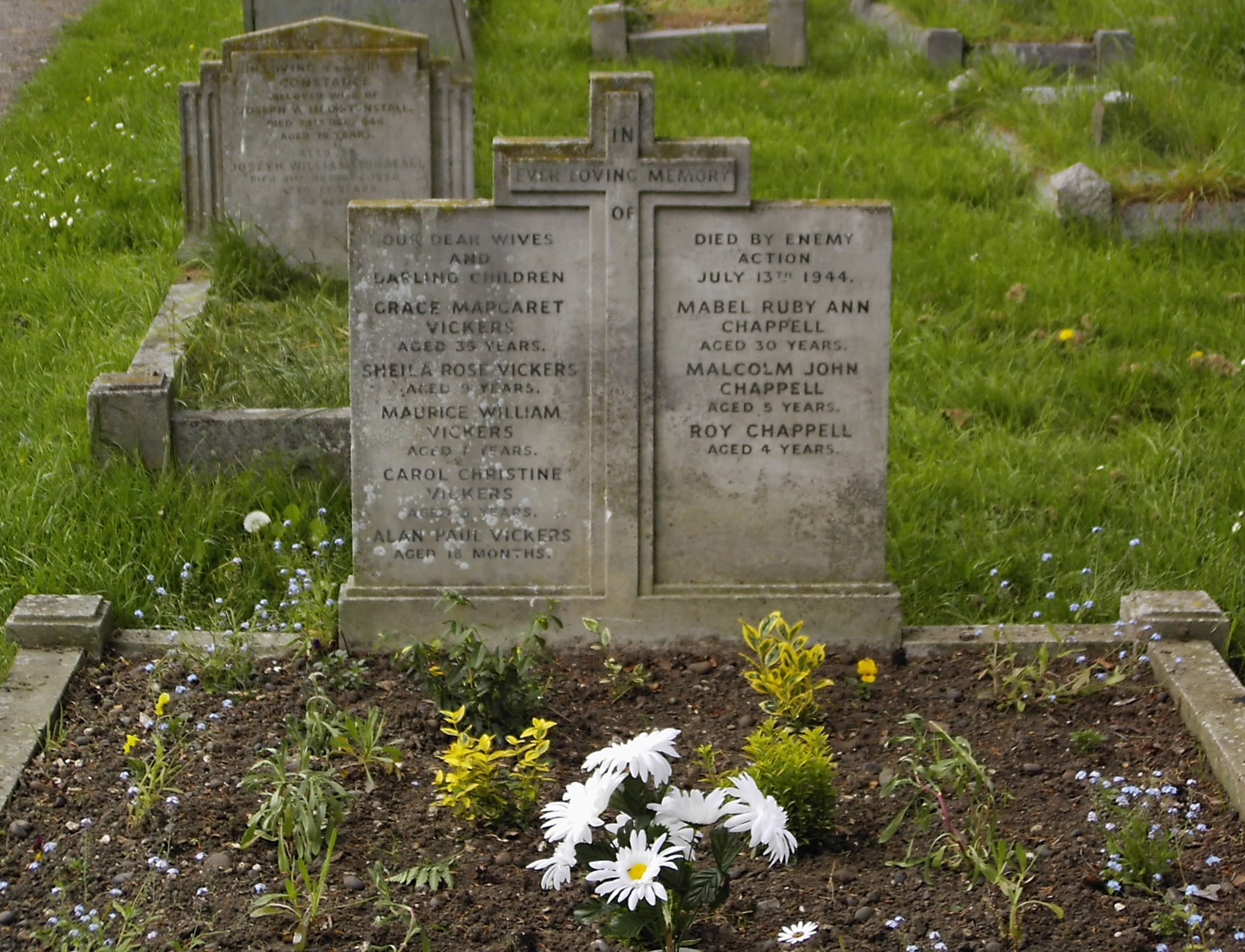


3. LEST WE FORGET.
Wartime memories of Farnborough Kent children
The articles by John Riches that follow were the only ones not included in the original book. They were written in 2008 after the book was published, and updated in 2016. The memorials in Farnborough churchyard to those killed in 1944 have recently been cleaned, and a second article by Ian Chandler has now been added to this website page, see below.
It is well over 50 years since Joyce and I married, causing me to move from Farnborough. But I’ve stayed in touch and each time I visit I walk down into the churchyard not only to pay my respects at my mother and grandparents’ graves, but also to school friends who lost their lives in World War Two. With Western Europe having been largely at peace for over 60 years, it seems difficult to recall that in those dark days our beloved Farnborough was in the midst of a war zone. We carried gas masks, frequently went into air raid shelters, watched armed convoys on the arterial road and gazed at Royal Air Force and enemy aircraft above our heads. Life was certainly exciting, but very dangerous!
Wendy Walker remembered her mother Lydia Wroe recalling war time memories. Her mother worked at the Farnborough Engineering Works, a substantial factory that stood at the end of Starts Hill Avenue on land now occupied by the homes of State Farm Avenue. After some bombs had landed close by, her mother rushed to Farnborough Primary School then situated at the bottom of Starts Hill, to make sure Wendy was not injured. Wendy and her school friends were not injured, but some Farnborough people were not so lucky.
Died 1st September 1940.Killed by a stray bomb, St Fillans, 2. Orchard Road, Farnborough |
|||
| Lawrence: | Percy Arthur | Aged 30 | Died 2 Orchard Road |
| Lawrence: | Phyllis Mary | Aged 32 | Died 2 Orchard Road Daughter of Mr and Mrs Harvey of Southborough |
| Lawrence: | John Frederick | Aged 8 | Died 2 Orchard Road |
| Lawrence: | David Harvey | Aged 5 | Died County Hospital, Farnborough |
The Battle of Britain Campaign Diary states that on Sunday 1st September 1940, by 1100 hours about one hundred enemy aircraft were over Kent. Some penetrated to Biggin Hill where there was heavy damage. Later that day a second wave of about 80 aircraft followed. Biggin Hill and Kenley were the objectives. It seems likely that a stray bomb, intended for Biggin Hill, killed the Lawrence family
Next Chapter Back to Introduction
